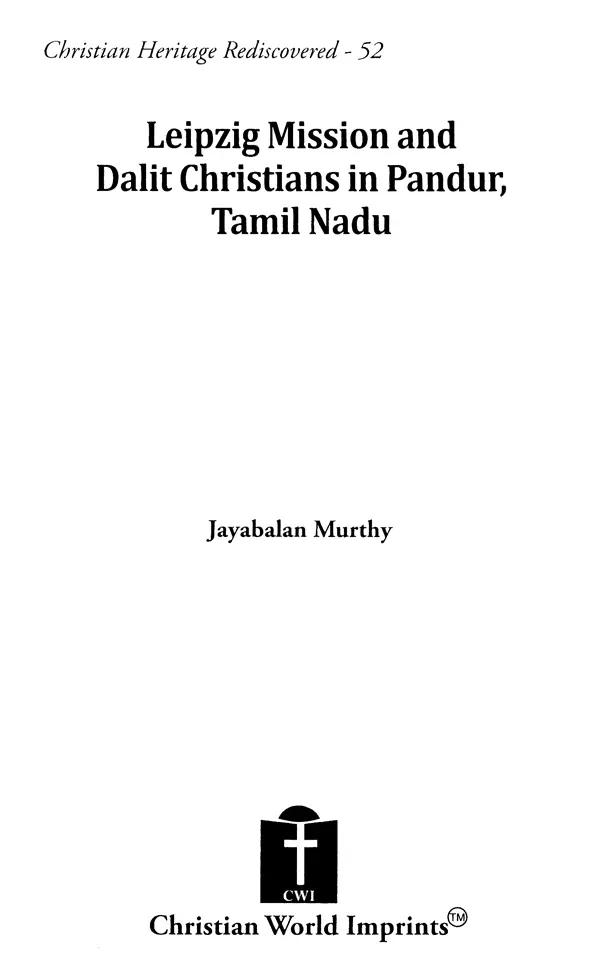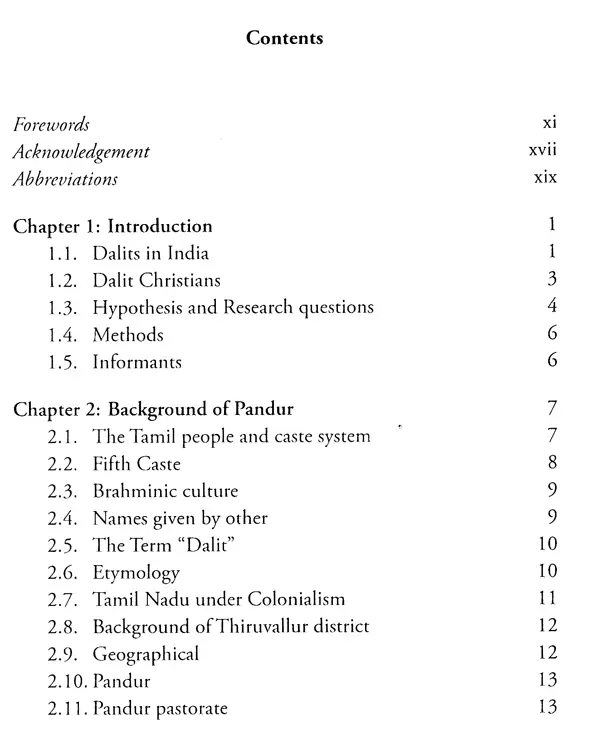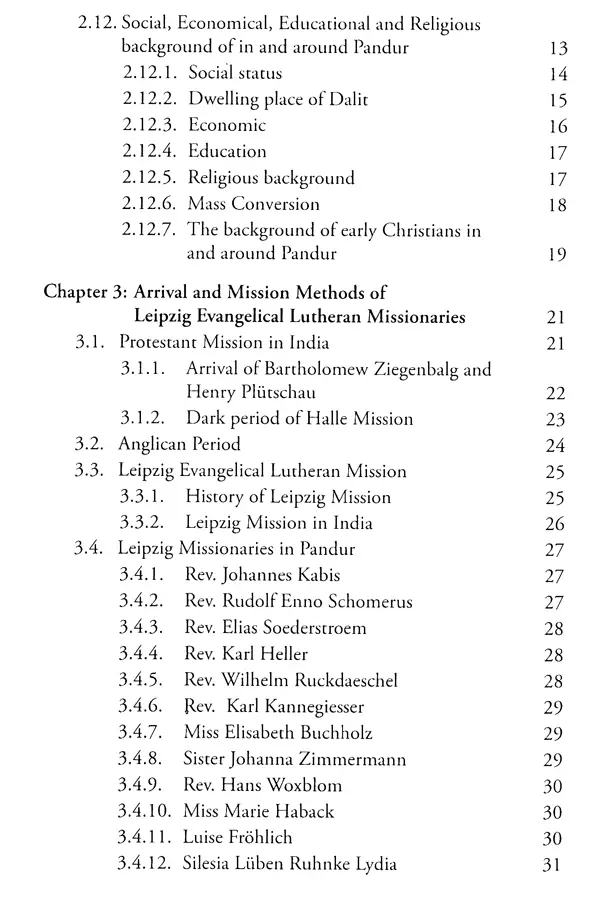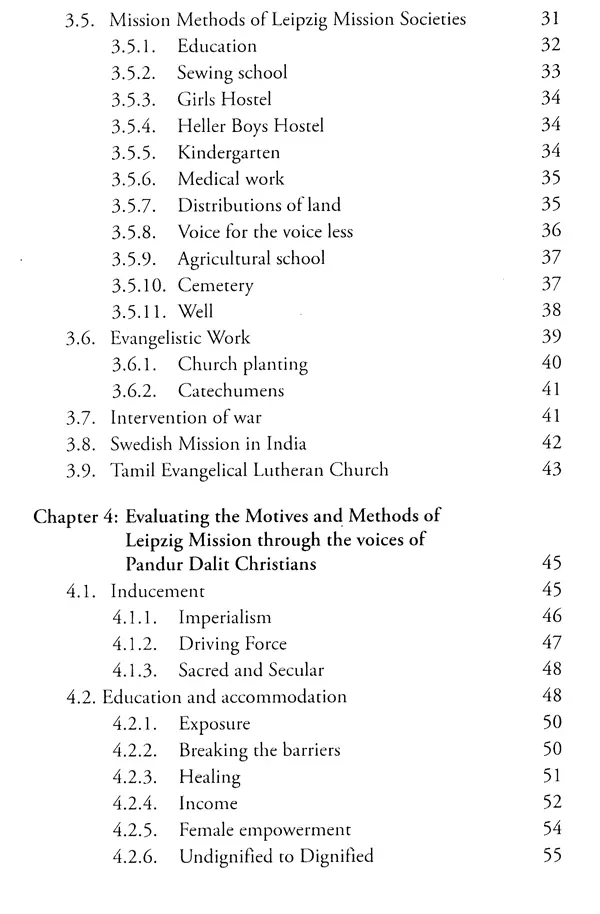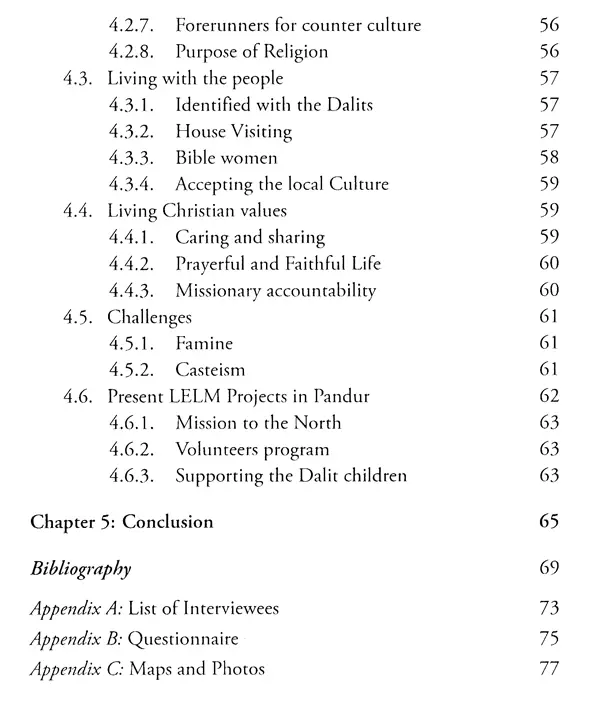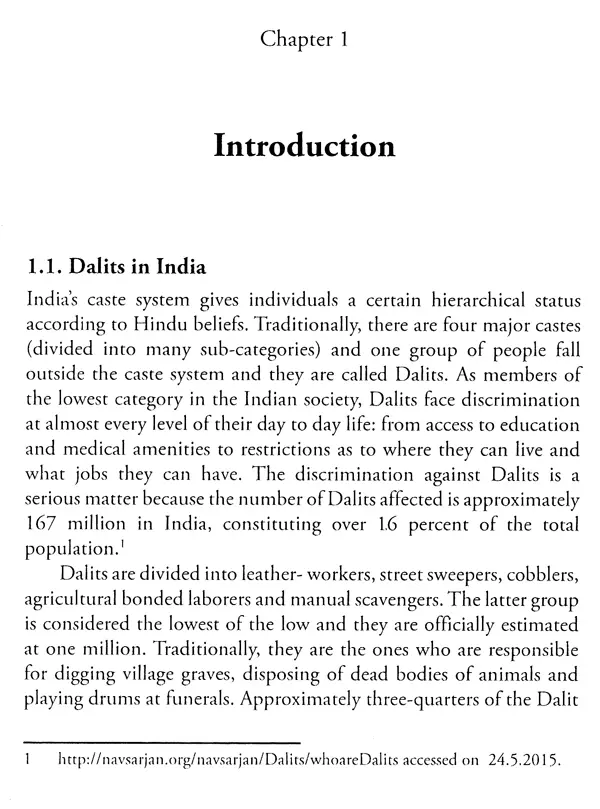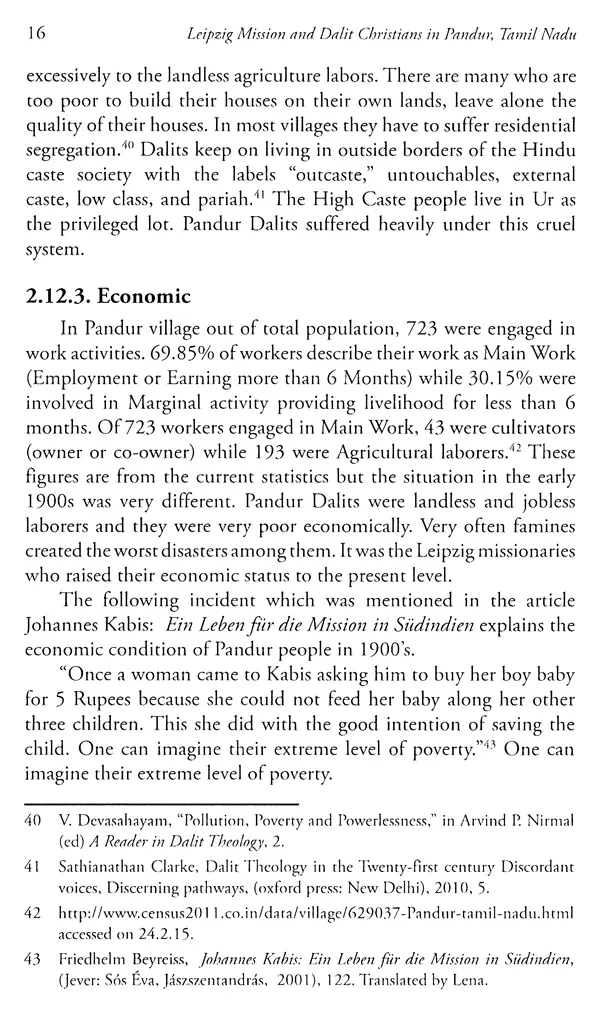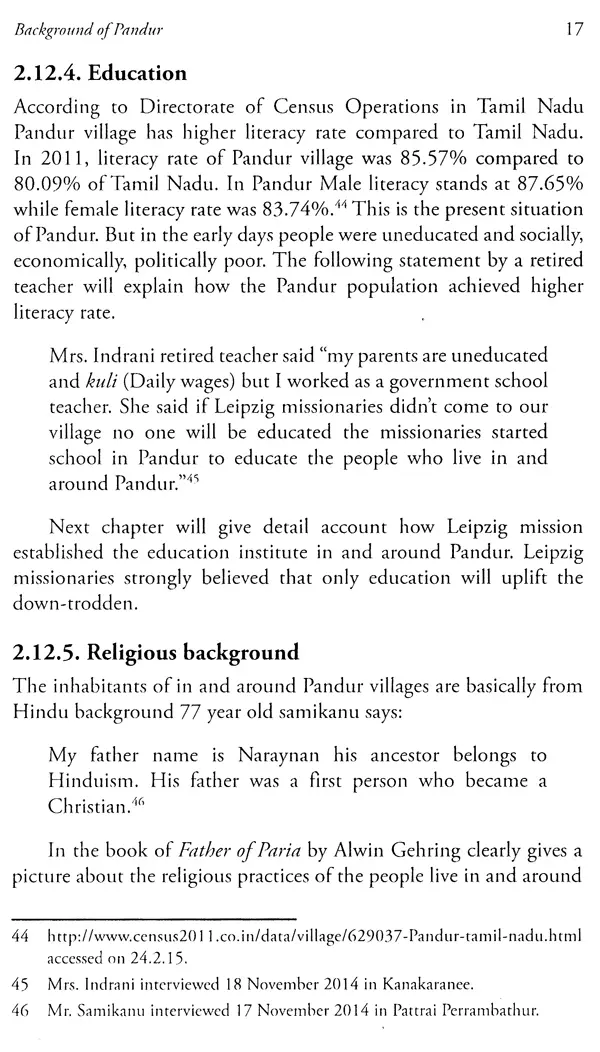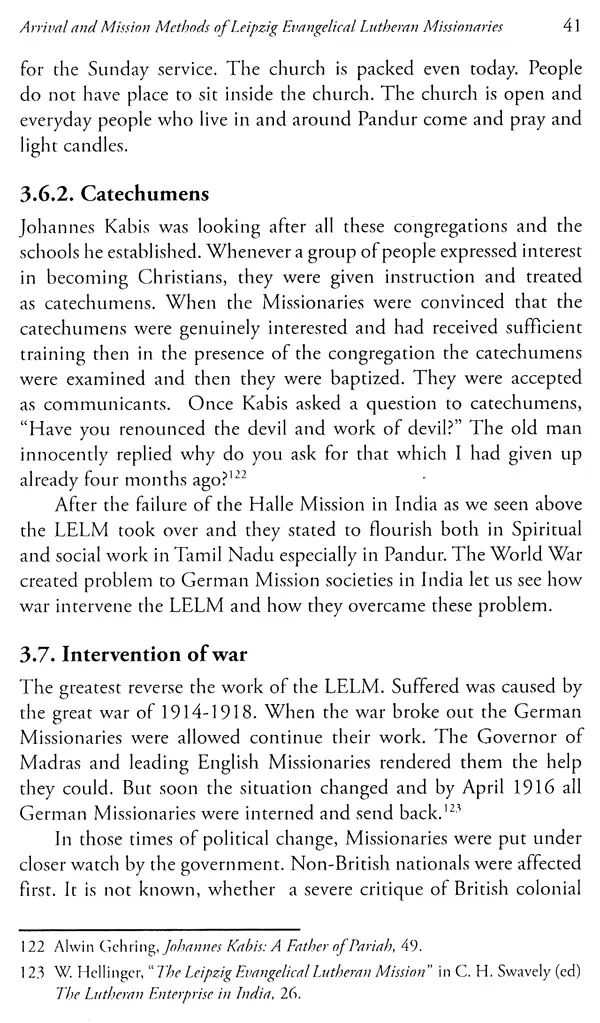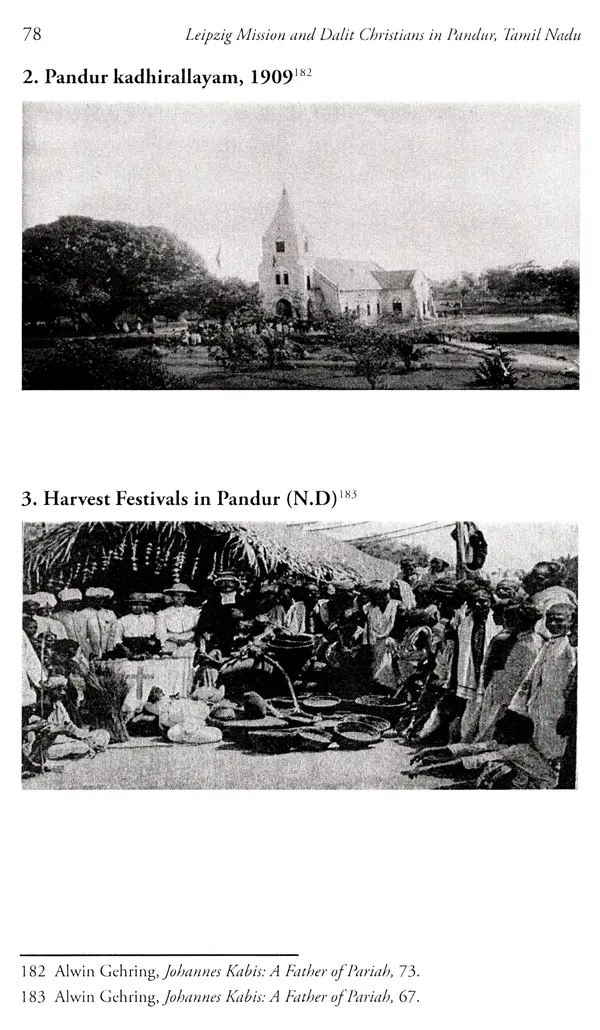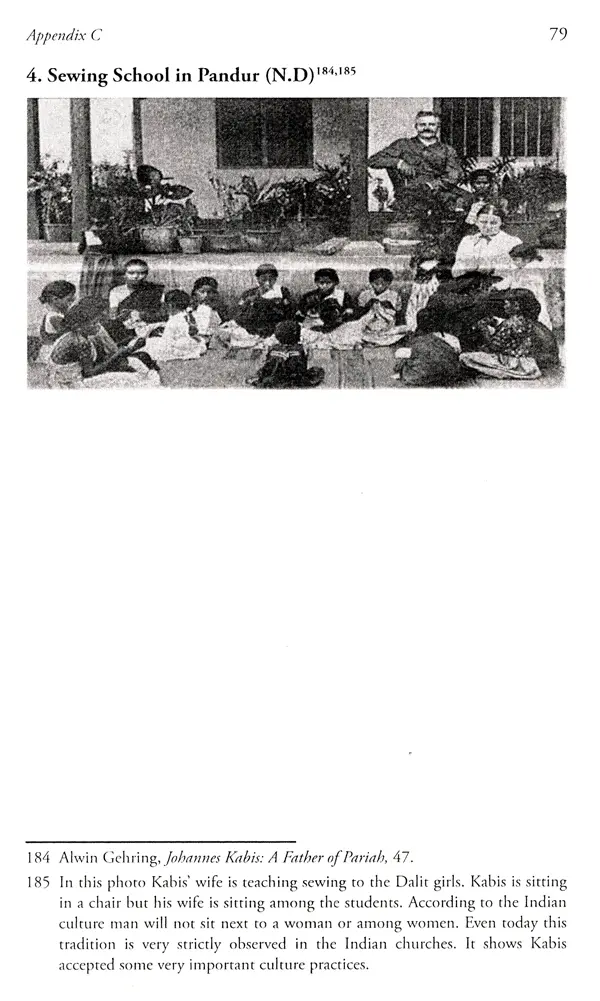
Leipzig Mission and Dalit Christians in Pandur, Tamil Nadu
Book Specification
| Item Code: | UAZ837 |
| Author: | Jayabalan Murthy |
| Publisher: | Christian World Imprints, Delhi |
| Language: | English |
| Edition: | 2017 |
| ISBN: | 9789351481904 |
| Pages: | 97 (Throughout B/w Illustrations) |
| Cover: | HARDCOVER |
| Other Details | 9.00 X 6.00 inch |
| Weight | 290 gm |
Book Description
This book exposes the discriminations suffering of Pandur Dalits in Tamilnadu and how the Leipzig Evangelical Missionaries helped them to overcome their situations. The Leipzig Evangelical Lutheran Mission (LELM) was a major mission in Pandur near Chennai. Pandur is intimately associated with Rev. Johannes Kabis who came to India in 1877. Pandur has been a thriving Christian centre for decades with a strong Christian congregation, Church and several institutions. These Christians are descendants of Dalits (former untouchable Paraiyars) who embraced Christianity. From a life of near slavery, poverty, illiteracy, oppression and indignity, conversion to Christianity transformed their lives. Purpose of this book is to elucidate the role of Leipzig missionaries in the social, economic, educational and spiritual life of Pandur Dalits.
Jayabalan Murthy is a Doctoral student at George August University Göttingen. He completed his Bachelor of Divinity at Gurukul Lutheran Theological & Research Institute, Chennai; M.A in Christian studies from University of Madras; and M.A. in Intercultural from George August University Göttingen. He has written several articles in German and English; one of his English article entitled Born To Be Broken: Jesus, Christmas and Dalit Shepherds (Published by National Churches Council of India, 2011) was also translated into German and got published in SELK church monthly magazine. His research focus lies on Martin Luther's Theology, impact of German Lutheran Churches in India, Intercultural Studies and Dalit Theology.
Since the beginning of the British colonial government, it was customary to describe India as a caste-ridden society, in which the values of the so-called caste-Hindus determine the lifestyle. A view, commonly held among the so-called 'Orientalists', was that the Hindus were linked to a rigid, hierarchical and Brahmin-dominated value system, in which individualism did not play any role, and from where there was no way of escape for the individual. In recent times, this view has been cast into doubt. The European view of the caste system, as it has been argued, played a crucial role in defining the Indian society as traditional and consolidating the caste system. which the Europeans endorsed and thus constituting the Indian social structure.
This book shows that this common view has to be put into question. The German missionaries, who worked in Tamil Nadu in the 19th century, comprehended the Indian Society as reflected in their own parishes. The majority of the Christians in Tamil Nadu were Dalits and members of various ethnic Sudra groups. The need to acquire a thorough knowledge of the structure of Indian society arose out of the practical missionary work and its subsequent theological considerations. The question concerning the relationship between the small Christian minority and the Indian society at large also determined the concept with which the missionaries carried out their mission work. Their approach to the principles of comprehension and classification was inevitably euro-centric. The prominent issue for the missionaries, whether the caste differences and local rituals were compatible with the Christian faith, depended on the individual assessment and theological conviction, and had its impact on the understanding of the Indian social system.
Jayabalan Murthy's study of the Dalit Christians in Pandur in Tamil Nadu focuses on the caste images of the Leipzig missionaries and convincingly he shows of what eminent importance the contribution of the Dalits has been to the building of a Lutheran Church. His analysis of the conceptions of caste at the time of the Leipzig missionaries does not only rely on western documents like mission reports and letters of the missionaries, but the importance of this research work is that it shed light on the perspective of the Christian Dalits themselves, by listening to their voices and by searching for hidden transcripts of their voices in the archives.
The method with which the German Lutheran missionaries treated the caste problem indicated nevertheless, that hegemonic claims existed in the thinking of Graul, Ochs and others as well. The moral superiority of the Christianized West is frequently emphasized in their accounts. They left no doubt about the fact that the Indian society was in need of a 'moral' revival. The question had to be raised whether this revival should have taken place with reference to an ethos, which the missionaries identified as traditionally Indian, or whether this revival also entailed the adoption of a Western lifestyle. In this they distinguished themselves from their British missionary colleques.
Because of their long years of service in India and their extensive knowledge of the local conditions, as well as their critical distance to the East India Company, many missionaries took an independent position from the official discourse with the Orientalistic researches when observing and reflecting on the Indian society. Jayabalan Murthy offers a detailed account of one of the prominent parishes and villages in which the Leipzig mission was active and thus opens the reader's eyes to a complex intercultural exchange project that resulted in an independent Tamil Church.
Book's Contents and Sample Pages
